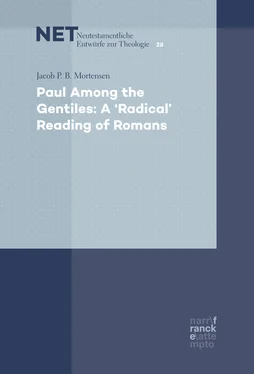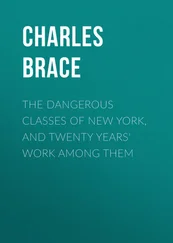Ethnic Stereotypes – a modern perspective
In ‘The Spectacle of the ’Other”’ (2003), cultural theorist Stuart Hall (1932–2014) describes the process of social or cultural stereotyping.1 That something is stereotyped means that it works through a set of representational practices. As the outcome of these practices, the stereotyped object or person becomes reduced to a few essentials, as though it was fixed in nature or ontologically by a few, simplified characteristics. Hall explains that the process of stereotyping (or ‘othering’) corresponds to the way a cartoonist portrays, illustrates, and caricatures a certain type with a few, simple, essentializing strokes of the pen. The portrayed type becomes reduced to the signifiers of typical differences – for example, impiety, sexual immorality, fraudulence, unrestrainedness, or the like. The stereotyped description then becomes a popular type that reduces the individual portrayed to a few simplified, reductive, and essentialized features, easy to identify, copy, and pass on.
Hall claims that we always make sense of things in terms of wider categories – we understand the particular in terms of its type. We assign someone membership in a certain group according to class, gender, age, nationality, race, linguistic group, sexual preference, religion, political affiliation, and so on. A type is any simple, vivid, memorable, easily grasped and widely recognized characterization in which a few traits are foregrounded. At the same time, change or development is minimized. However, the type is different from the stereotype. Stereotypes seize the few, simple, vivid, memorable, easily grasped and widely recognized characteristics of an object or a person, and then reduce everything about the object or person to those traits, exaggerate and simplify them without allowing them to change or develop. Edward Said’s (1935-2003) analysis of how Europe constructed a stereotypical image of ‘the Orient’ is an example of this.2 Said explains that far from simply reflecting what the countries of the Near East were actually like, ‘Orientalism’ was the discourse by which European culture was able to manage, and even produce, the Orient, politically, morally, sociologically, militarily, ideologically, scientifically, and imaginatively during the post-Enlightenment period. Thus, stereotyping reduces, essentializes, naturalizes, and fixes differences; there is no depth to a stereotyped presentation, merely surface.
Stereotyping deploys a strategy of splitting, dividing what is normal and acceptable – from a specific (cultural, ethnic, religious, moral, medical, etc.) point of view – from the abnormal and unacceptable. It also excludes or expels everything that does not fit the norm. Thus, stereotypes align closely with social types. But social types live by the rules of the cultural codes, whereas stereotypes are excluded. Stereotypes become ‘the other’ in the process of ‘othering’. What matters in the stereotyping process is that boundaries must be clearly delineated. Therefore, stereotypes are characteristically fixed, clear-cut, and unalterable. Thus, stereotyping works through closure and exclusion (or identity and othering), because it symbolically fixes boundaries and excludes everything that does not belong. Consequently, stereotyping is part of the maintenance of the social and symbolic orders: it establishes a symbolic frontier between the normal and the deviant, the healthy and the pathological, the acceptable and the unacceptable, what belongs and what does not or is ‘other’, between insiders and outsiders, us and them. In this way, stereotyping facilitates the symbolic bonding among those of us who are ‘right’ into one imagined community, thereby excluding all those, the others and outsiders, who are different and ‘wrong’. Roughly stated, this is what Stuart Hall presents as the essentials of stereotyping.
Stereotyping in Antiquity
The theory of stereotyping is a modern one, developed by contemporary cultural theorists, but very similar discourses were expressed in antiquity. The content of these similar, ancient discourses corresponds closely to the ways in which Bruce Malina (among others) has described the ancient Mediterranean culture.1 Malina explains that in the ancient Mediterranean culture, people thought more sociologically (communally) than psychologically.2 In general, they were more concerned with group stereotypes than individual features, because the ancient Mediterranean culture was a collectivist culture. Instead of thinking about a person as an individual, they thought about a person as ‘an undifferentiated ethnic ego mass’.3 They knew others generically (by their ‘nature’), not individualistically, and they perceived them as members of either an in-group or an out-group. In the in-group, people regarded each other sympathetically, from a perspective of similarity. When people from an in-group considered those from an out-group, they regarded them with indifference or even hostility, almost as different species of being.
According to Malina, people in the ancient Mediterranean culture neither thought nor acted introspectively, and they understood and assessed one another in terms of group-determined stereotypes.4 They classified each other according to family or kin group, race and place of origin, gender and class. They thought of, and categorized the world by means of genus and species, and they were not sensitive to individuals. This way of thinking may be described as stereotypic, because it was thought that if you knew these sorts of details about a person, you knew the person. If you knew their traits, you had all the information you needed in order to know a person’s character and the sort of behaviour you could reasonably expect from him. These general descriptions – articulated from Malina’s contemporary perspective – find ancient textual support in several places. For instance, there are several descriptions of a stereotypical slave personality, commonly held and espoused by the elite in antiquity. These descriptions state that slaves were, by definition, lazy, negligent, wilful, cowardly, and criminal.5 A similar stereotypical slave persona is found in caricatures of slaves in Greek comedy.6 In Aristotle’s Politics , we also find descriptions supporting the idea of a stereotyped ethnic identity:
Let us now speak of what ought to be the citizens’ natural character. Now this one might almost discern by looking at the famous cities of Greece and by observing how the whole inhabited world is divided up among the nations. The nations inhabiting the cold places and those of Europe are full of spirit but somewhat deficient in intelligence and skill, so that they continue comparatively free, but lacking in political organization and capacity to rule their neighbours. The peoples of Asia on the other hand are intelligent and skilful in temperament, but lack spirit, so that they are in continuous subjection and slavery. But the Greek race participates in both characters, just as it occupies the middle position geographically, for it is both spirited and intelligent; hence it continues to be free and to have very good political institutions, and to be capable of ruling all mankind if it attains constitutional unity. The same diversity also exists among the Greek races compared with one another: some have a one-sided nature, others are happily blended in regard to both these capacities.7
From other ancient authors we learn that Tiberians have ‘a passion for war’,8 Scythians ‘delight in murdering people and are little better than wild beasts’,9 ‘Cretans are always liars, evil beasts, lazy gluttons’,10 in ‘the seamanship of its people… the Phoenicians in general have been superior to all peoples of all times’,11 ‘this is a trait common to all the Arabian kings’ that they do ‘not care much about public affairs and particularly military affairs’.12 Thus, the logic behind such perceptions was that if you knew a group, a people, or a race, you knew the individual as a representative of the group, because ‘you are the way you look’.
Читать дальше












